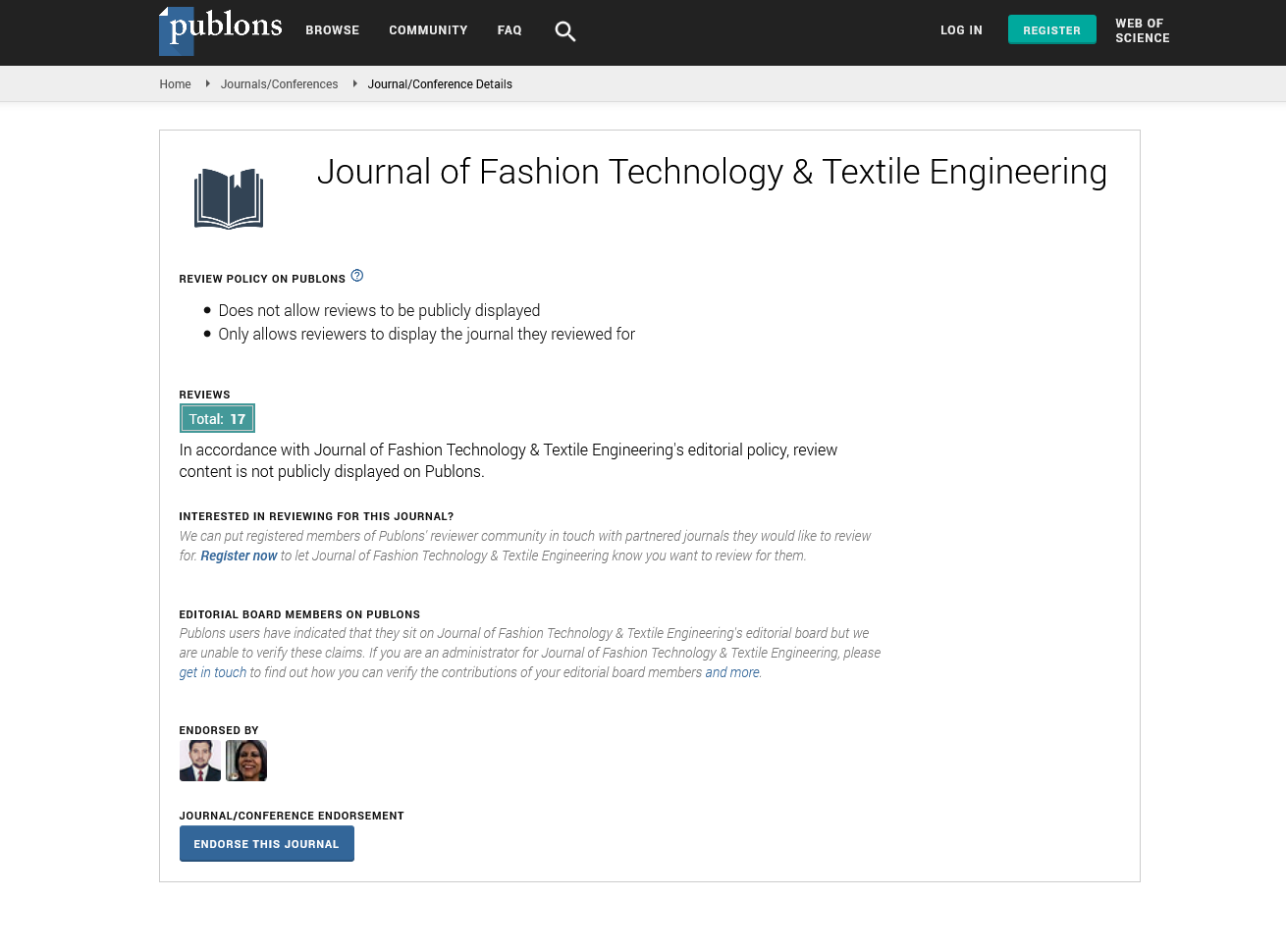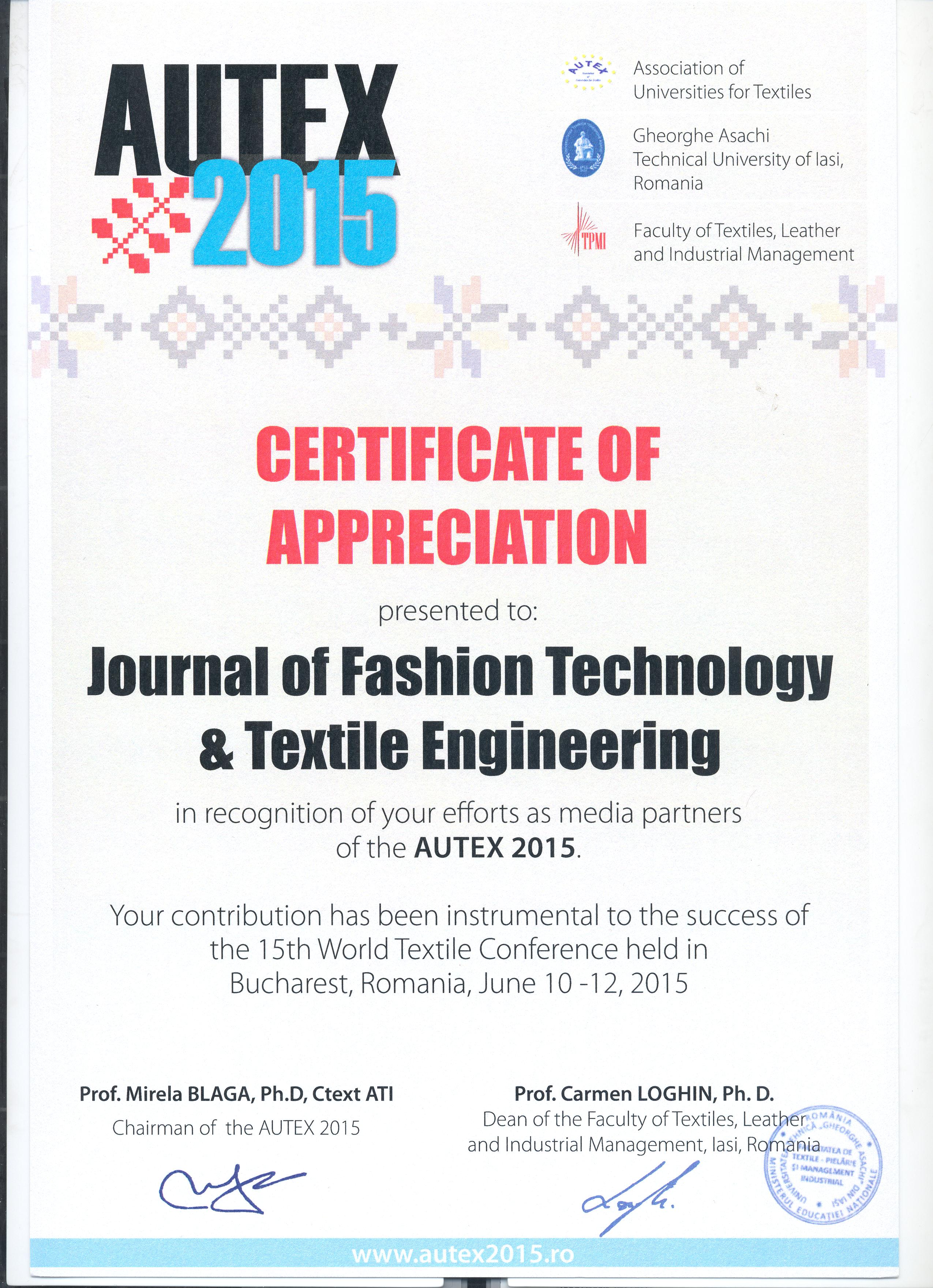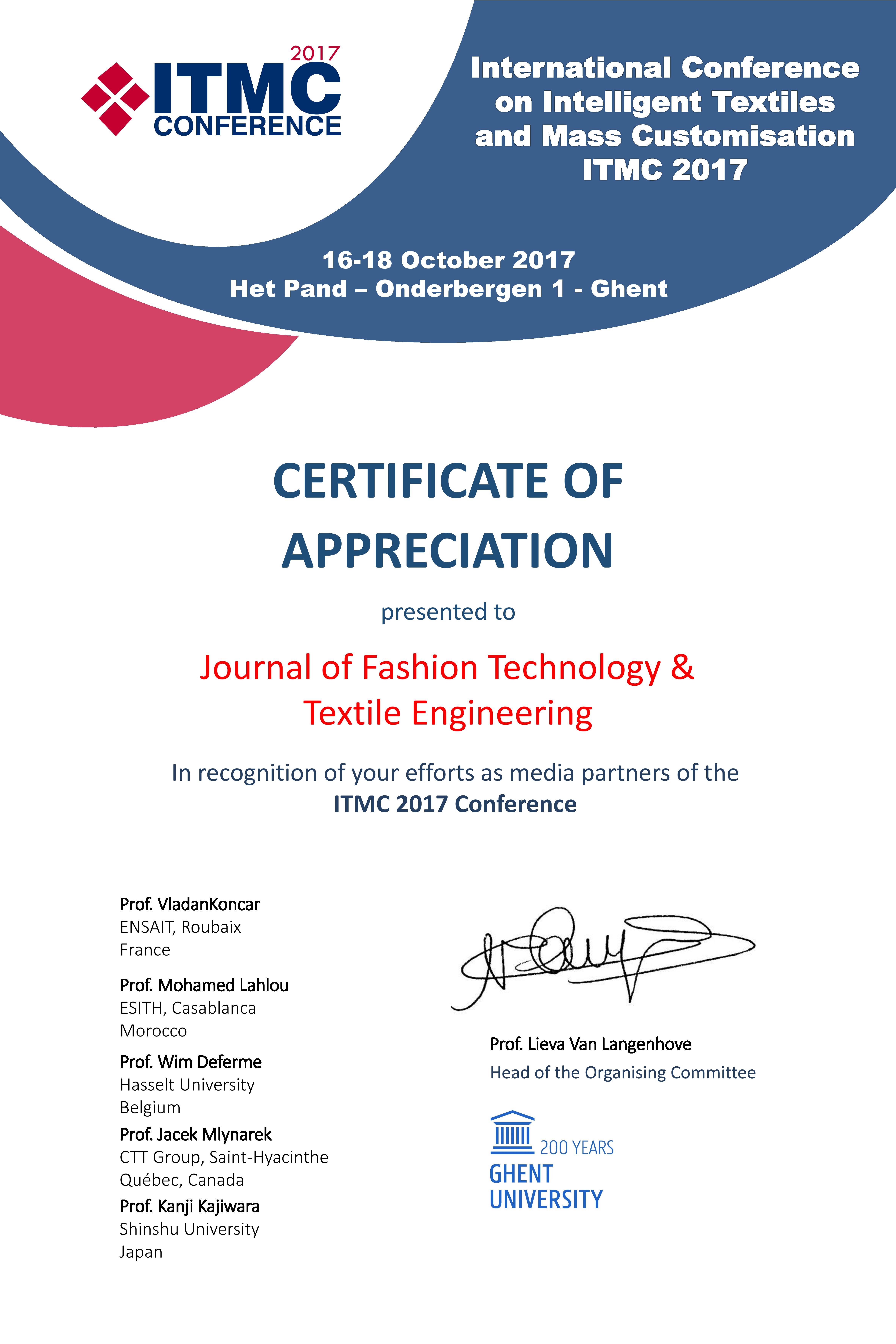Commentary, J Fashion Technol Textile Vol: 12 Issue: 5
Innovative Applications of 3D Printing in Fashion: Enhancing Structural Design and Promoting Material Sustainability
Sarah Wilson*
1Department of Apparel, Events and Hospitality Management, Iowa State University, Ames, USA
*Corresponding Author: Sarah Wilson,
Department of Apparel, Events
and Hospitality Management, Iowa State University, Ames, USA
E-mail: sarahwilson.256@gmail.com
Received date: 23 September, 2024, Manuscript No. JFTTE-24-152098;
Editor assigned date: 25 September, 2024, PreQC No. JFTTE-24-152098 (PQ);
Reviewed date: 09 October, 2024, QC No. JFTTE-24-152098;
Revised date: 17 October, 2024, Manuscript No. JFTTE-24-152098 (R);
Published date: 25 October, 2024, DOI: 10.4172/2329-9568.1000380.
Citation: Wilson S (2024) Innovative Applications of 3D Printing in Fashion: Enhancing Structural Design and Promoting Material Sustainability. J Fashion Technol Textile 12:5.
Description
3D printing technology is redesigning fashion in exciting ways, blending complex design with environmental awareness. This change towards using 3D printing reflects a commitment to reconsidering traditional production processes, especially in terms of innovative structural techniques and a focus on sustainable materials. Both of these elements open doors to more dynamic designs and eco-friendly fashion solutions. The addition of 3D printing in fashion has transformed the approach to structure and custom. Designers can now produce geometrically complex pieces that would be inspiring or even impossible using conventional methods. This precision provides greater control over textures, shapes and complex details, allowing designers to produce customs that were once only theoretical. Architectural inspirations often translate directly into garments, with some outfits constructed from interlocking pieces rather than fabric, producing modular designs that adjust to the individual.
Additionally, 3D-printed clothing allows for a new level of customization, where garments can be personalized digitally and then printed to fit specific measurements. This eliminates waste associated with fabric offcuts and unnecessary materials, aligning with the goal of sustainability. Because each piece is customized, it reduces excess inventory and minimizes waste from surplus production. As the fashion industry moves towards eco-friendly, 3D printing provides a favorable stage for sustainability. Traditional textiles often depend on non-renewable resources or are produced through energy-intensive processes. With 3D printing, designers can use materials that are more environmentally friendly, including biodegradable polymers, recycled plastics and even innovative bio-based materials. This minimizes the reliance on resource-heavy manufacturing methods and supports a circular economy.
Furthermore, some of these materials can be recycled back into the production cycle, providing solutions that reduce environmental impact. By converting waste materials into new designs, 3D printing also reduces the need for new resources. For example, recycled plastics are now a common choice for 3D-printed items and plantbased polymers derived from cornstarch or algae are increasingly popular alternatives. One of the primary environmental concerns with traditional textile production is the extensive use of water and chemicals in dyeing and finishing processes. In contrast, 3D printing typically uses materials with built-in color, eliminating the need for dyeing. This greatly reduces water consumption and pollution from textile dyes, which is especially beneficial in regions where water scarcity is a primary issue. By incorporating color directly into the printing materials, the fashion industry can reduce its dependence on water and chemical treatments, making the process more sustainable.
3D-printed garments can also provide improved durability compared to traditional fabrics. Because each piece is digitally crafted and optimized, the resulting items tend to be less prone to wear and tear. This durability aligns with sustainability goals by reducing the need for frequent replacements, extending the lifecycle of each item. Some designers have even developed repair-friendly pieces, where damaged parts can be reprinted and replaced without discarding the entire garment. Despite its many advantages, 3D printing in fashion still having issues such as material stiffness and limited breathability can affect comfort. However, advances in flexible and lightweight 3D printing materials are making garments more practical for everyday apparel the development of new materials that imitate the softness and fluidity of natural textiles could extend the possibilities for 3D-printed fashion.
Conclusion
In the future, as more designers embrace this technology, 3D printing is probable become a larger part of conventional fashion. With increased awareness around environmental concerns, consumers may enterprise demand for sustainably produced garments, encouraging further innovation. By developing and reducing environmental impact, 3D printing is set to become a valuable tool for fashion designers looking for blend artistry with ecological responsibility. The addition of 3D printing in fashion stands as an example of how technology can transform not only how clothes are made but also how the industry considers sustainability. As technology advances, the fashion industry evolves into a dynamic space where creativity merges with environmental consciousness, promoting sustainable practices and inspiring innovative designs that resonate with eco-friendly values.
 Spanish
Spanish  Chinese
Chinese  Russian
Russian  German
German  French
French  Japanese
Japanese  Portuguese
Portuguese  Hindi
Hindi 


